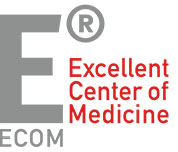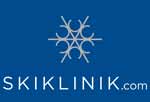| Achilles Tendon Tear |
|
General points for the Achilles Tendon tear
|
An achilles tendon tear caused by injury is frequently noticed by patients. A clicking noise or the sensation of a kick against the calf is often reported. Provided the tendon is completely torn during the accident event, a pronounced weakness of the calf musculature is displayed. It must be noted however, that a residual function in terms of a repelling movement of the foot is retained, because the musculature of the Tibialis Posterior Muscle, as well as the Peroneus Longus and Brevis Tendons support the function of the achilles tendon and after the event of an accident, can partially take over this function. This is also the explanation as to why some patients do notice the accident event; however, the actual diagnosis process is delayed because the function of the achilles tendon is initially seemingly preserved.
In the case of the diagnosis of an accident-caused complete achilles tendon tear, the clinical examination findings frequently suffice which are normally supplemented with an ultrasound examination in order to ensure the diagnosis. In order to determine the extent of damage and in particular, to better demonstrate the separation of the torn tendon, MRI has proven itself to be helpful and significant.
With our long-standing experience, supported by scientific literature on this topic, operative reconstruction is normally the therapy of choice for an accident-caused complete tear of the achilles tendon. In exceptional cases, for example, for very young patients, or for patients where an operative therapy does not come into question due to other reasons (age, secondary illnesses, the intake of medication), a conservative therapy can be undertaken. This normally involves immobilisation in a forefoot lower leg cast for at least 6 weeks with gradual establishment of the zero-degree position of the ankle joint or treatment in a special shoe.
|
Non-operative therapy
|
A non-operative therapy of an achilles tendon disease can only occur when it involves a fresh (e.g. injury due to an accident), where at least parts of the penetrated tendon remain. As already previously mentioned, a non-operative therapy for a complete tear of the achilles tendon can also then be considered where an operative therapy does not come into question due to other reasons (age, secondary illnesses, the intake of medication).
The non-operative therapy consists firstly of the achievement of the freedom of pain for the patient, and measures which encourage the blood-supply, physical measures, the avoidance of new traumatisation to the tendon, as well as physiotherapeutic exercise treatments.
|
Operative therapy and aftercare
|
In order to achieve the quickest-possible, and safest re-creation of the full function of the achilles tendon, we recommend the suturing of the achilles tendon in case of a fresh, complete, accident-caused penetration of the tendon. Provided that in the region of the torn tendon pre-existing damage has already occurred, we recommend an operative treatment in all cases. Information about the extent of actual damage as well as possible pre-existing damage is provided, in this case with MRI, which in correlation with the clinical examination leads to a diagnosis and the discussing of planned operative procedures.
In the case of an operative treatment, which if possible, should be undertaken within a time-frame of 7 days, there are several operative possibilities. In the case of the conventional achilles tendon suture, the exact findings are seen after opening the tear region and every torn structure will be reattached with an operative suture. This has the advantage that torn muscles as well as the tendon sheath can be adequately sutured together and at the end of the operation the surgeon can estimate the extent of the quality of the tendon suturing which has been carried out. Another option would be the percutaneous achilles tendon suturing without opening the torn region. Although this leads to a better cosmetic outcome, it also has a disadvantage in that the exact reunion of the torn tendon ends cannot be one hundred percent assessed. For selected cases, only the percutaneous suturing can therefore be brought into question. This procedure should rather be avoided by professional sports people and very ambitious active sports people.
If achilles tendon suturing is planned for you, a lower leg cast will already be made on presentation to the practice which will be applied after the operation. You will therefore need to bring it with you to the operation.
Depending on the extent of the damage, the lower leg cast will be made with a forefoot support of between 45 and 30° and will be continuously worn in the first two weeks, with the exception during physiotherapeutic treatments. A positional alteration of the foot up to a 0 degee position takes place two and four weeks respectively after the operation. In addition, depending on the extent of the damage, the conversion to a lower leg orthosis (Vacuped shoe) can be made at a specific time determined by the surgeon, with sole contact on under-arm crutches once again possible.
Depending on the extent of the damage, it is necessary to wear a lower leg orthosis for up to 8 weeks after surgery for a complete rupture of the achilles tendon.
Protection, and only controlled weight-bearing of the achilles tendon is necessary for at least up until the completion of the 12th post-operative week. Running and jumping pressures within the scope of competition sport should not be undertaken before completion of the sixth month.
|
|
|
SPECIALISED ORTHOPAEDIC SURGERY, ARTHROSCOPY, SPORT TRAUMATOLOGY, AND REHABILITATION
Arabellastr. 17
81925 Munich
Germany
Tel: +49. 89. 92 333 94-0
Fax : +49. 89. 92 333 94-29
Diese E-Mail-Adresse ist gegen Spam-Bots geschützt, Sie müssen Javascript aktivieren, damit Sie sie sehen können.
Dr. Erich H. Rembeck
Impressions of the ER Centre for Sport Orthopaedics in Arabellapark.
>> Photo Gallery
|










